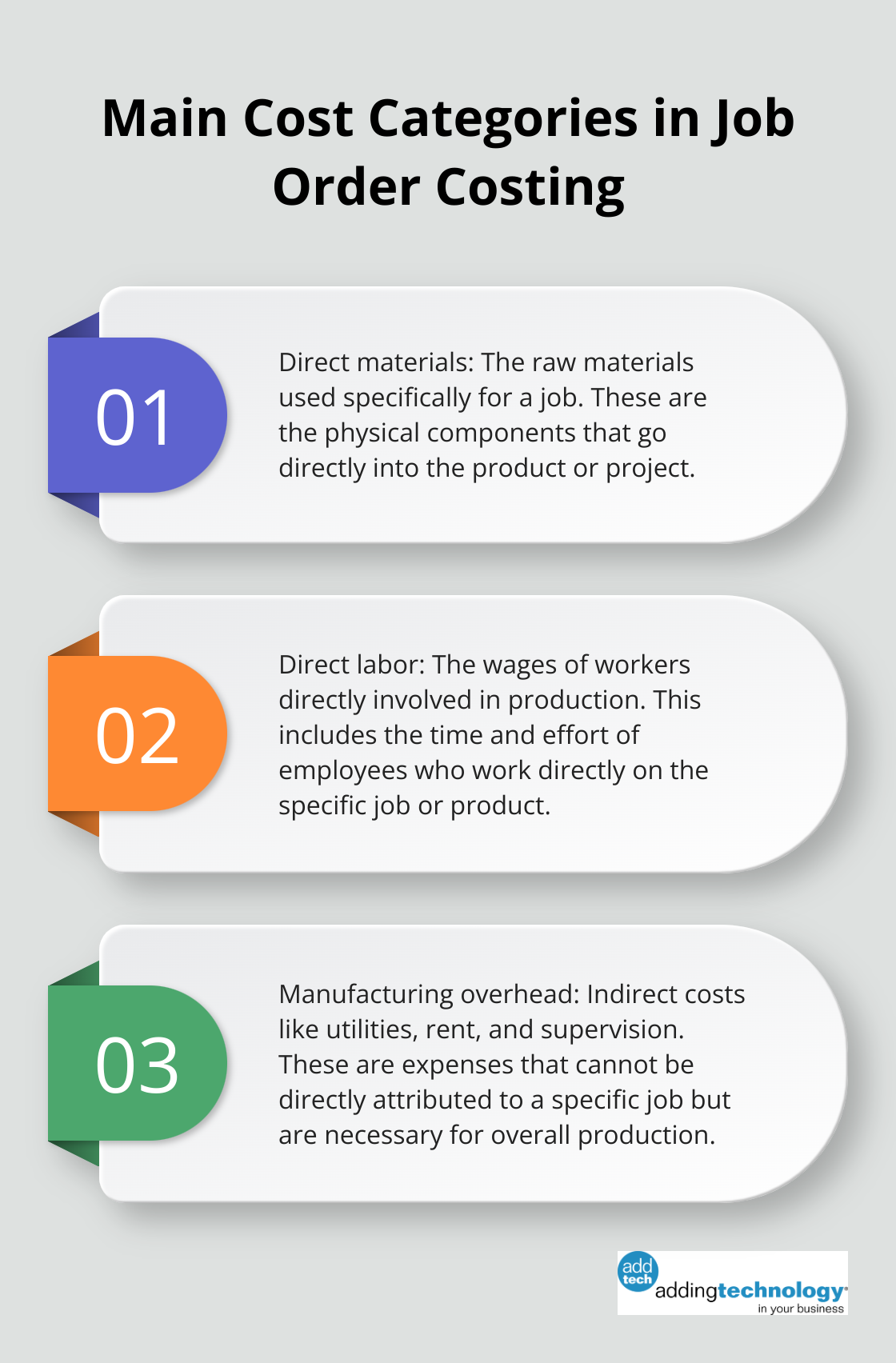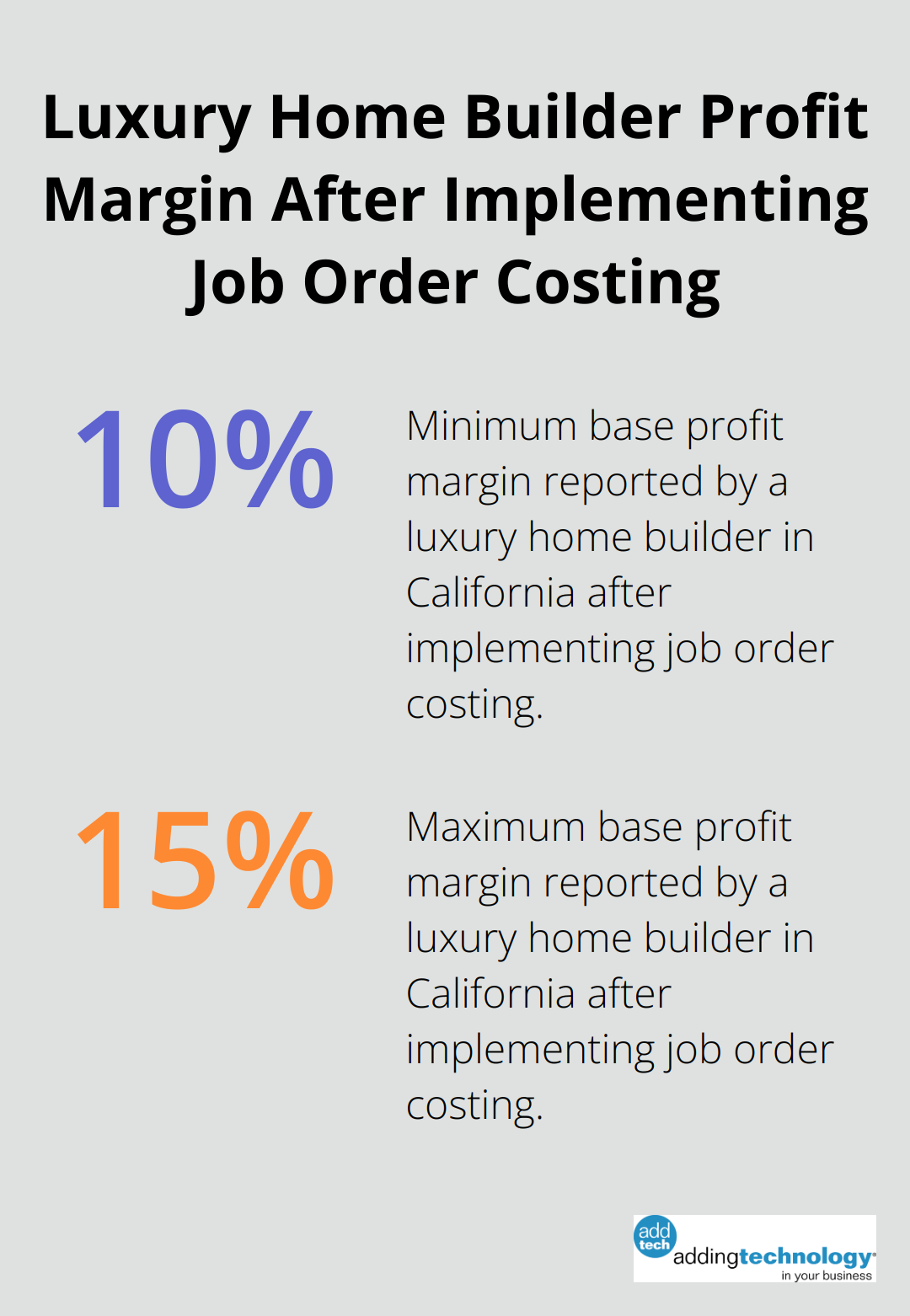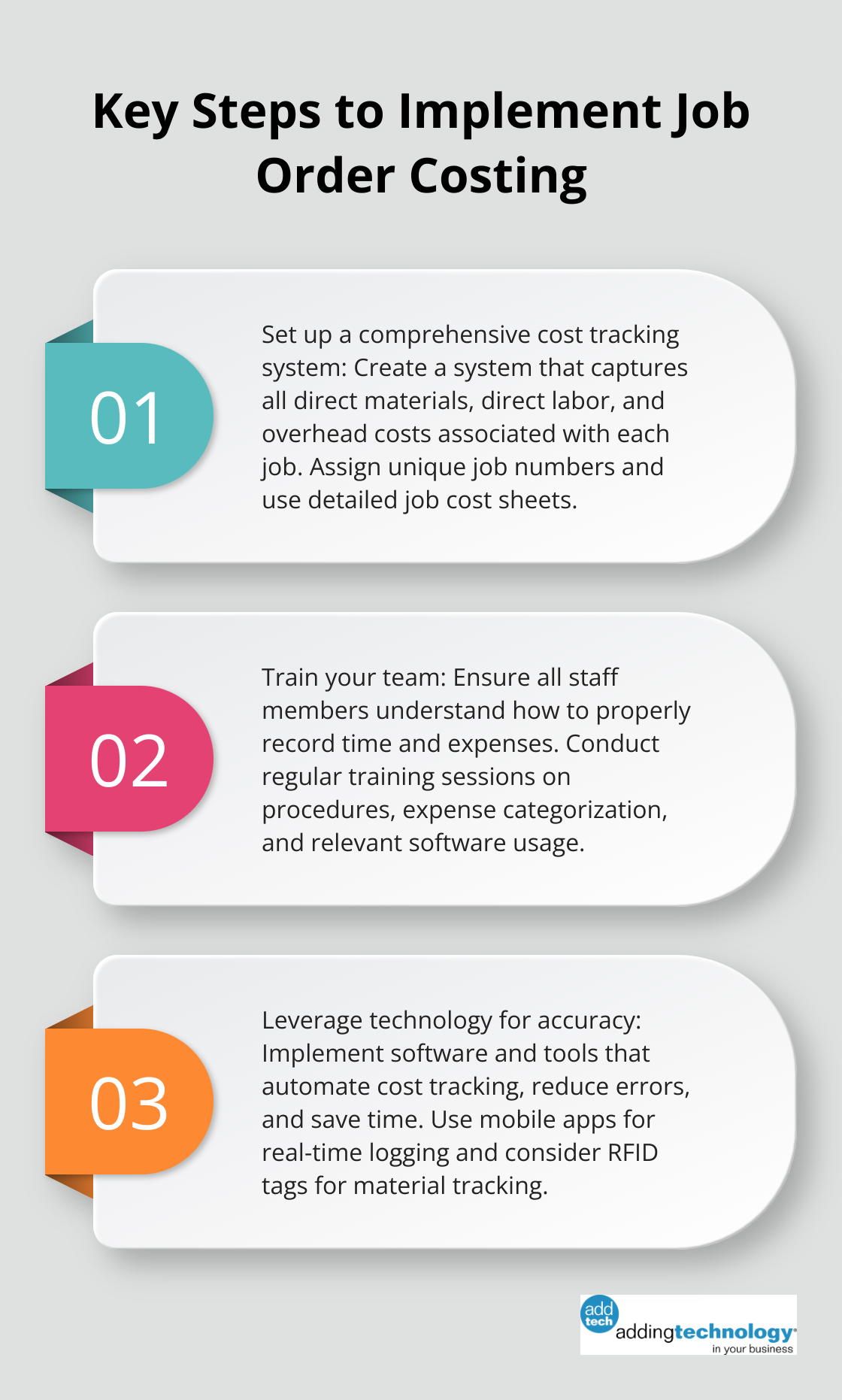
At adding technology, we understand the importance of accurate cost tracking for businesses. Job order costing is a powerful method that can significantly impact your bottom line when used correctly.
Job order costing would most likely be used in an environment where products or services are highly customized. This blog post will explore when this costing method is most effective and how to implement it successfully in your organization.
Job order costing is a costing method which is used to determine the cost of manufacturing each product. This approach benefits businesses that produce custom items or handle distinct projects.
In job order costing, we assign costs to specific jobs or batches of goods. This method proves particularly useful in industries like construction, where each project is unique. For example, building a custom home involves different materials, labor, and overhead costs compared to a standard apartment complex.
We track three main cost categories in job order costing:

Job order costing excels in scenarios where products or services vary significantly from one job to another. It’s the preferred method for:
It’s important to understand the difference between job order costing and process costing. While job order costing focuses on individual jobs, process costing applies to mass-produced, identical items.
For instance, a furniture maker crafting bespoke pieces would use job order costing. In contrast, a soft drink manufacturer would likely use process costing due to the uniform nature of their product.
To implement job order costing effectively, we recommend:
Many construction companies have implemented robust job order costing systems (with the help of services like Adding Technology). These companies often report improved profitability and better decision-making as a result.
Job order costing allows for more accurate pricing. Accurate job costing ensures that pricing is based on actual costs plus a desired margin. This precision is especially valuable in competitive industries where margins can be tight.
As we move forward, let’s explore the specific industries and scenarios where job costing truly shines.
In the construction industry, job order costing proves invaluable. Each project, whether a custom home or a commercial building, has unique requirements. Materials, labor, and overhead costs vary significantly from one project to another.
A luxury home builder in California reported a 10%-15% base profit margin after implementing a job order costing system. This system allowed them to accurately track costs for high-end finishes and custom architectural features, leading to more precise pricing.

Manufacturers of custom or specialized products benefit greatly from job order costing. This method allows for precise tracking of costs associated with unique specifications or small production runs.
An aerospace parts manufacturer saw a reduction in cost overruns after adopting job order costing. They could now accurately account for the expensive materials and specialized labor required for each unique component.
Professional service firms, such as law offices or marketing agencies, often handle projects that vary widely in scope and required resources. Job order costing helps these businesses accurately bill clients and understand the profitability of different types of projects.
A marketing agency in New York implemented job order costing and discovered that their web design projects were significantly more profitable than their social media management services. This insight allowed them to adjust their service offerings and pricing strategy, resulting in an increase in overall profitability.
Repair and maintenance businesses (such as auto repair shops or HVAC service companies) find job order costing particularly useful. Each repair job can vary significantly in terms of parts needed and labor hours required.
A large auto repair chain implemented job order costing across its locations and reported an increase in overall profitability. The system allowed them to accurately price complex repairs and identify which types of services were most profitable.
Job order costing shines in these industries due to its ability to capture the unique costs associated with each project or service. The next section will explore how businesses can effectively implement this costing method to maximize its benefits.
We’re not just accountants; we’re part of your crew. We renovate your books, implement cutting-edge technology, and provide you with the real-time job costing information you need to make informed decisions.

The foundation of effective job order costing is a comprehensive cost tracking system. This system should capture all direct materials, direct labor, and overhead costs associated with each job.
Assign unique job numbers to each project for easy tracking and reporting. Create detailed job cost sheets that break down costs into categories. Update these sheets in real-time as expenses occur.
Many construction companies find success using cloud-based accounting software that integrates with their project management tools. This integration allows for automatic cost allocation as soon as expenses are incurred or time is logged.
Your job costing system is only as good as the data that goes into it. Thorough staff training is essential. Everyone involved in the project, from project managers to field workers, should understand how to properly record time and expenses.
Conduct regular training sessions to ensure everyone is up to date on the latest procedures. These sessions should cover topics like how to categorize expenses, when to update job cost sheets, and how to use any relevant software or tools.
Technology plays a pivotal role in modern job costing. The right software can automate many aspects of cost tracking, reduce errors, and save time.
Mobile apps allow workers to log time and expenses on-site in real-time. This immediacy improves accuracy and provides up-to-date cost information.
Consider using RFID tags for tracking materials. This technology can automatically update your inventory and job cost sheets as materials are used, providing real-time visibility into material costs.
Implementing job order costing isn’t a one-time task. It requires ongoing review and analysis to ensure its effectiveness.
Schedule regular reviews of your job cost reports. These reviews should compare estimated costs to actual costs, identify any discrepancies, and analyze the profitability of different types of jobs.
One mid-sized construction firm conducts weekly cost reviews. This practice has allowed them to identify cost overruns early and make necessary adjustments, resulting in a 15% improvement in project profitability over the course of a year.
The goal of job order costing is not just to track costs, but to use that information to make better business decisions. Regular analysis can reveal trends, highlight areas for improvement, and inform future estimates and bids.
Implementing job order costing effectively takes time and effort, but the payoff in terms of improved profitability and decision-making is substantial. With the right system, training, and ongoing analysis, you can turn your job costing data into a powerful tool for business growth.
(Note: If you’re looking for expert assistance in implementing job order costing for your construction business, Adding Technology offers tailored solutions to streamline your financial processes and enhance operational efficiency.)
Job order costing excels in environments where products or services vary significantly between projects. This method proves invaluable for businesses in construction, specialized manufacturing, professional services, and repair industries. It enables precise cost tracking, leading to accurate pricing and improved profitability.
Effective implementation of job order costing requires a comprehensive approach. Companies must set up robust tracking systems, train staff thoroughly, and leverage technology for accuracy. Regular reviews of job cost reports allow businesses to gain deeper insights into project costs and make informed decisions.
For construction companies seeking to enhance their financial management, Adding Technology offers tailored solutions. Our expertise in construction accounting, combined with advanced technology integration, can help streamline financial processes and provide real-time job costing information (essential for making informed decisions).









At adding technology, we know you want to focus on what you do best as a contractor. In order to do that, you need a proactive back office crew who has financial expertise in your industry.
The problem is that managing and understanding key financial compliance details for your business is a distraction when you want to spend your time focused on building your business (and our collective future).
We understand that there is an art to what contractors do, and financial worries can disrupt the creative process and quality of work. We know that many contractors struggle with messy books, lack of realtime financial visibility, and the stress of compliance issues. These challenges can lead to frustration, overwhelm, and fear that distracts from their core business.
That's where we come in. We're not just accountants; we're part of your crew. We renovate your books, implement cutting-edge technology, and provide you with the real-time job costing and financial insights you need to make informed decisions. Our services are designed to give you peace of mind, allowing you to focus on what you do best - creating and building.
Here’s how we do it:
Schedule a conversation today, and in the meantime, download the Contractor’s Blueprint for Financial Success: A Step by-Step Guide to Maximizing Profits in Construction.” So you can stop worrying about accounting, technology, and compliance details and be free to hammer out success in the field.